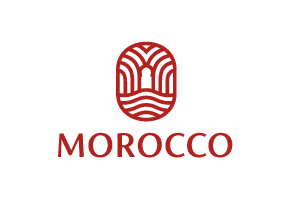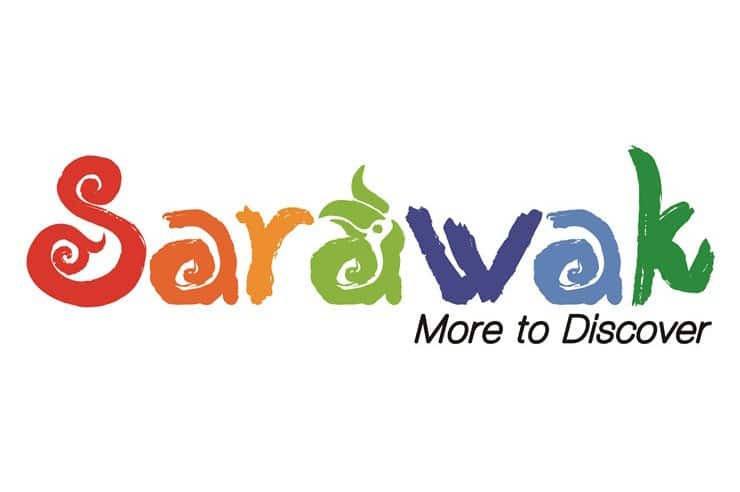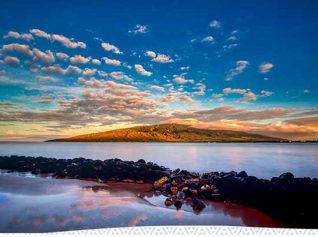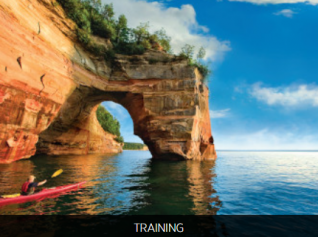My Travels in Korea
By Ramy Salameh, Asst. Marketing Manager, Tour2Korea.com Seoul I recently travelled to Korea in December 2003. This was my second visit to this beautiful country and once again it did not fail to surprise my every sense. My first experience of Korea was in June 2002 during the FIFA World Cup Korea/ Japan. I was situated in Seoul and had no opportunity to visit more of the country, time restrictions meant remaining in the capital to watch games and party with the millions of ‘Be the Reds’ Korean fans who made the tournament so special. Therefore, having the opportunity to visit Korea in 2003 was something I was not going to miss. Seoul is a city that you simply will not tire of, as there is always something going on day and night. The city sprawls for miles into the distance and the Seoul Tower at the top of Namsan Park provides the perfect vantage point to witness this. By day, one can follow the Han River meandering out of sight and by night the city lights provide a wonderful backdrop to a meal in the revolving restaurant. There is a cable car at the foot of Mount Namsan that is ready to whisk you to the tower, but in my opinion a walk through this huge park is the preferable way to reach the summit, so that you can fully appreciate the vista along the way. The city is so big that there are new areas to discover and paths to tread. The landmark sites are visible around the city and are worth visiting in all seasons, but don’t forget the little teas houses hidden away in Insadong Street. This thoroughfare is famous for selling traditional arts, crafts and is a training ground for street musicians and entertainers. The World Cup Stadium still hosts major football matches, but the Koreans are too dynamic to let such a facility be used totally for one purpose. A shopping and entertainment complex is now proving a hit with Seoulites. Koreans work hard, but also play hard and this is reflected in the variety of activities available throughout the city and country. The heart of Seoul pumps loudly through the streets of Jogno, Myeongdong and Itaewon. These areas are vibrant, energetic and popular with young Koreans who fill the busy neon lit streets. One can indulge in western or traditional Korean food, visit a variety of bars & clubs which includes Karaoke or simply sample the traditional Korean snacks sold by street vendors. A not to be missed event for one evening is ‘Korea House’, built in the traditional style and serving a banquet of meat and vegetables that have been seasoned with garlic and red peppers, scallions, soy sauce, fermented bean paste, ginger and sesame oil. The highlight of an evening at ‘Korea House’ is the theatre style performance charting Korean history and culture through dance and music. The city lives under the gaze of magnificent skyscrapers which tower above the cities residents, but long before the giants of the 20th century arrived, Seoul was the preserve of the Joseon Dynasty. Dongdaemun and Namdaemun gates and five major palaces namely, Gyeonbokgung, Changdeokgung, Changgyeonggung, Deoksugung and Gyeonghuigung, still stand as a proud testament to a bygone era and still bring an oasis of calm to a city with a population of 11 million. Gyeongju The scenery was fantastic. It is a very real change from other parts of Korea in that you get the sense of space, especially from the area where Sokurram Grotto is situated. It is also a very good walk to the Grotto culminating in the amazing site of the sitting Buddha. It is no wonder that this great site including Bulguksa Temple has been added to UNESCO’s World Cultural Heritage List. Bulguksa Temple was the best example of its kind that I have ever seen and is surrounded by such beautiful gardens and walks that makes the whole experience quite breathtaking. Tumuli Park is a valuable experience and the sight of undulating mounds over 1 square mile is quite amazing. To be able to enter one of the burial mounds is the highlight, as you get to see from the inside how the mounds were constructed and some of the artifacts found within the tomb. Traditional Spa Experience – Korea There are many places in the world that people can experience a health spa, but in Korea going to a spa is similar to going to the gym or the pub in this country. Not only does it provide health benefits, but also gives people an opportunity to meet, chat, relax and even purchase snacks that can be eaten in the communal areas where people can watch television. I visited one of the biggest spa facilities in Korea which was located near to Busan, Korea’s second largest city. The hot springs were separated for males and females, allowing one to remove all clothing. There are 20 or more hot springs ranging in size, temperature and colour. Before my exfoliation scrub, I lounged in a yellow mud bath which is particularly good for the skin. The exfoliation scrub takes place on a massage table and the experienced masseurs use a rough cloth to scrub dead skin from your body, your limbs are soaped and then washed down leaving you refreshingly clean. If one needs an interlude from the hot springs then a number of sauna rooms are available to sweat out any impurities. Many are shaped like a dome and the walls are clad with amethyst and charcoal. After a day touring, working or shopping I can think of no better way to relax and indulge oneself. The communal areas are for males and females to meet-up, but one obviously wears the shorts & t-shirts supplied at reception, to ensure one’s modesty. The communal areas are used by courting couples to spend time together, that outside would be frowned upon. Beomeosa Temple Stay – Korea 2003 “The mantra of the monk was ‘Help yourself before helping others’ and to understand the concept that ‘my neighbour, nature and myself are not separate, but all are one’. This he explained was the route to enlightenment”. The Jogye Order of Korean Buddhism opened their temple gates in May 2002 to the outside world. The temples have been a spiritual refuge to Koreans for 1600 years. Most temples are located deep in mountain valleys to maintain a sense of calm and quiet. The Jogye Order are inviting Koreans and foreigners to experience Temple Stay, to show Korean culture, ancient Buddhist tradition and the Asian spiritual world by opening places of worship that is home to over ten thousand practicing monks and nuns. Beomeosa Temple is located in Busan’s Mt. Guemgjeongsan and was the site chosen for my temple stay. The temples have several gates through which you must pass before reaching the main Buddha Hall. One’s journey begins by passing through the first gate which is symbolic of your first steps toward enlightenment. Our temple orientation was undertaken by Seung San Sunim (monk) and consisted of discussing Buddhism, Buddhist philosophy and Seon (Zen) and learning the rules of the temple. The next 24-hours of enlightenment started with changing our dress; large grey suits were provided to wear, a means of making everyone equal. The activities that ensued included; circling a pagoda with lotus lanterns, whilst chanting Buddhist teachings in the dead of night, right through to Zen meditation techniques. At just after 3am our group stood before the Bell Pavillion awaiting the morning ceremony. The bell is struck to tell the time or call the monks. In the morning the bell is struck 28 times and in the evening 33 times. Three monks performed the ceremony as we stood quietly in the main courtyard. Each monk took his turn to strike the Dharma Drum and each started drumming quickly and then slowed to a single rhythmic bang. The beating of the Dharma Drum signifies the spreading of Buddha’s teachings throughout the world. The wooden fish instrument is the loudest and most decorative and is situated a few feet from the Dharma Drum. The monks strike the sides of the hollow centre with two sticks at various tempos. The wooden fish is used for reciting sutras, chanting services, signaling meal time and calling the congregation. The wooden fish signaled ‘Balwoo-gongyang’ which is a Buddhist meal ceremony that plays an important part in everyday lives of the monks. The food is simple and comprises of rice and vegetables and is shared out equally amongst the group in our Balwoo (bowls used to eat from). Balwoo Gongyang etiquette means that everyone eats in silence, sitting cross-legged on the floor and all the food in your bowl must be eaten. This was our preparation and sustenance for ‘bulmudo’, which basically translates as the temple’s martial arts program that signified the end of our Temple Stay experience. Temple Stay for me was the primary experience and primary highlight of my travels in Korea. As a tourist if you want to do something completely different and have an experience that will live with you for the rest of your life, then Temple Stay is it. It is rare to be able to immerse yourself in a fully operational Buddhist Temple and try and understand why people choose this way of life. You get the sense of spiritualism, calm and relaxation, that is alien to the strains and pressures of daily life. www.templestay.net Taekwondo Before you depart in your limousine bus toward Incheon International Airport, there is one activity that will ensure that you sleep on the flight home. Taekwondo, Korea’s traditional martial art, is an internationally recognised sport which has become popular around the world. It was designated as a demonstration sport during the 1988 Seoul Olympic Games and adopted as a medal sport during the 2000 Sydney Olympic Games. Tourists have the opportunity to take part in a full day course or just 90 minutes. I chose the short sharp shock of a 90 minute lesson. Dressed in my Taekwondo suit and with Korea emblazoned on my back, I was ready to enter the Dojang area. The Master took me through a light warm-up session before telling me the meaning of Tae-Kwon-Do. If you break down the word Taekwondo you realize the meaning; ‘Tae’ translates as ‘foot, leg or to step on’; ‘Kwon’ translates as ‘fist or fight’; and ‘Do’ means ‘way or discipline’. With this in mind I began a series of blocks, punches and kicks, all of which was in preparation for a sparring session with the Master. Having sparred for two minutes I was ready for a break, but the interlude was followed by the final activity of my lesson and that was to break a thick board of wood with my bare hand. The master asked me to write three wishes on the piece of wood and then he held it with both hands ready for me to smash it. Using my hand like a knife, I focused and thrust my body and arm through the wood which snapped easily under the pressure. I left the Dojang soon afterwards having been presented with a certificate, Taekwondo suit, my two-pieces of wood and plenty of good memories. www.tour2korea.com Tel : 020 7321 2535 / 020 7925 1717
 United Kingdom
United Kingdom United States
United States Asia Pacific
Asia Pacific












































EU airports bring back 100ml liquid rule
CLIA: Anti-cruise demos could cause itinerary changes in Europe
Co-pilot faints, easyJet flight issues ‘red alert’
Dozens fall ill in P&O Cruises ship outbreak
Woman dies after getting ‘entangled’ in baggage carousel